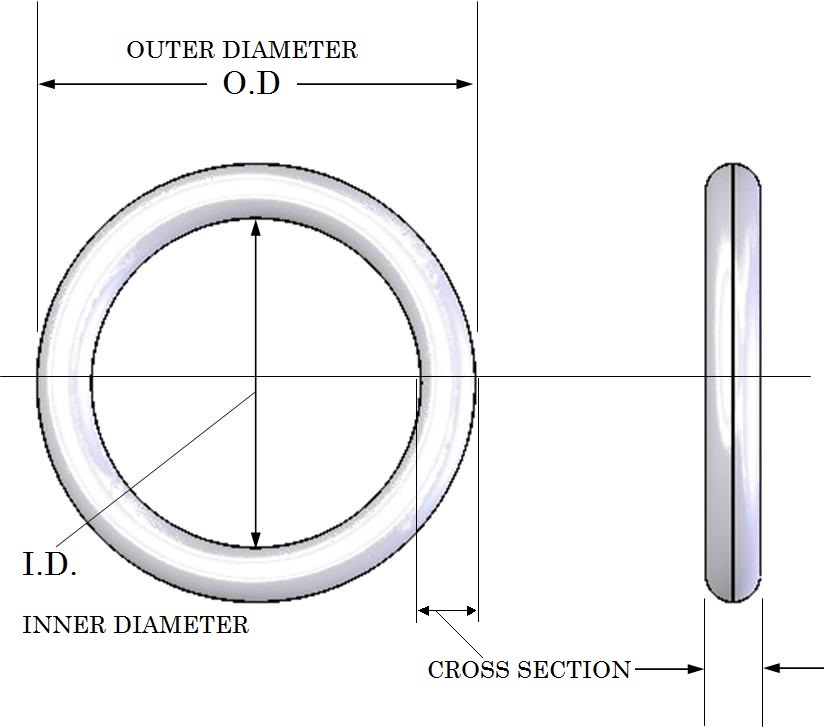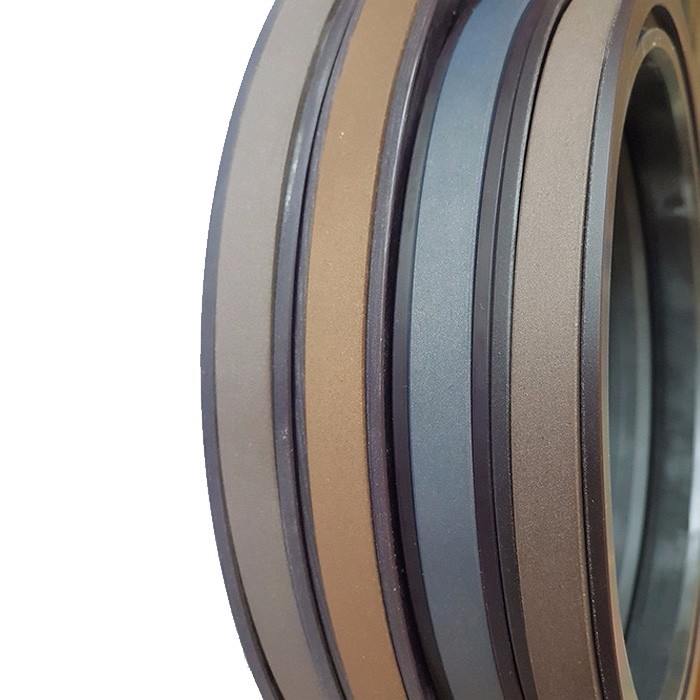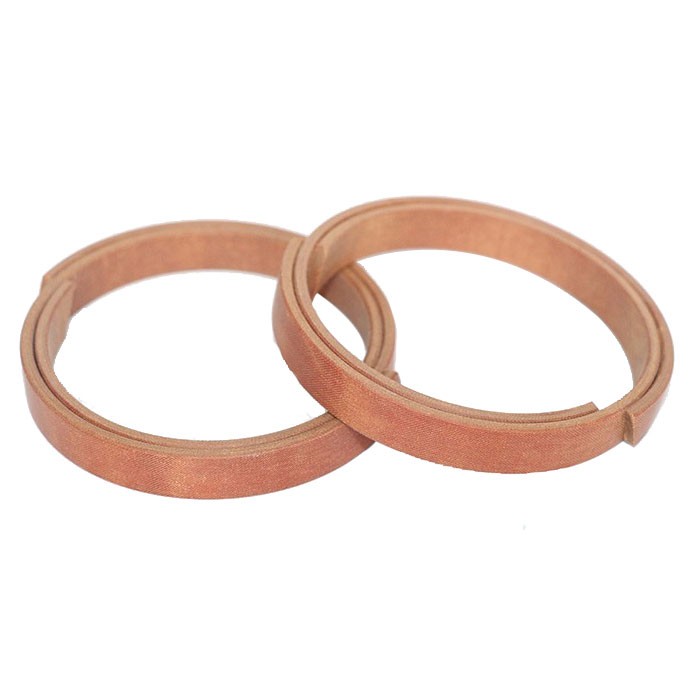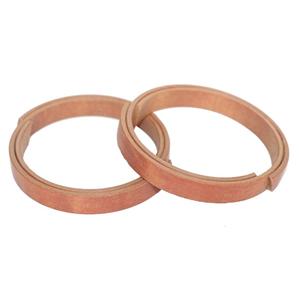
- NOK
- Japan
- 10 days
- 100000 pcs
O-ring is a rubber seal with a circular cross-section. Because its cross-section is O-shaped, it is called an O-ring and is also called an O-ring. It first appeared in the mid-19th century, when it was used as a sealing element for steam engine cylinders.
O-ring specifications include UHSO-ring specifications, UHPO-ring specifications, UNO-ring specifications, DHO-ring specifications, piston rod O-ring specifications, high temperature O-ring resistance, high-pressure O-ring resistance, and corrosion-resistant O-ring Ring, wear-resistant O-ring. FKM and NBR with NOK brand and OEM brand.
O ring
O-ring is a rubber seal with a circular cross-section. Because its cross-section is O-shaped, it is called an O-ring and is also called an O-ring. It first appeared in the mid-19th century, when it was used as a sealing element for steam engine cylinders.
O-rings are the most common mechanical design for sealing because they are cheap, simple to manufacture, reliable, and simple to install. O-rings withstand tens of megapascals (thousand pounds). O-rings can be used in static applications or in dynamic applications with relative motion between components, such as rotary pump shafts and hydraulic cylinder pistons.
O-ring specifications and standards
O-ring specifications include UHSO-ring specifications, UHPO-ring specifications, UNO-ring specifications, DHO-ring specifications, piston rod O-ring specifications, high temperature O-ring resistance, high-pressure O-ring resistance, and corrosion-resistant O-ring Ring, wear-resistant O-ring.
The O-ring standards are mainly GB 1235-76, GB3452.1-92; Japanese standard P TYPE, G TYPE, S TYPE, SS / V TYPE, F TYPE; American standard AS568, British standard series; European standard series
O-ring technical requirements include appearance requirements, size requirements and material physical performance requirements.
Appearance requirements meet GB / T3452.2-2007
Material requirements meet HG / T2579-2008
Size requirements meet GB / T3452.1-2005
O-ring application introduction
YX O-ring for hole
Product use: Used for sealing pistons in reciprocating hydraulic cylinders. Scope of application: TPU: general hydraulic cylinder, general equipment hydraulic cylinder. CPU: Hydraulic cylinders for construction machinery and high temperature and high pressure cylinders. Material: polyurethane TPU, CPU, rubber.
Product hardness: HS85 ± 2 ° A Working temperature: TPU:-40 ~ + 80 ℃, CPU: -40 ~ + 120 ℃ Working pressure: ≤32Mpa Working medium: hydraulic oil, emulsion.
O-ring for YX hole
Product use: This standard is applicable to the use of YX-type seals when the working pressure of the oil cylinder is greater than 16MPa, or to protect the seals when the cylinder is eccentrically stressed. Operating temperature: -40 to +100 degrees. Working medium: hydraulic oil, emulsion, water Product hardness: HS 92 ± 5A Material: polytetrafluoroethylene.
YX type O-ring for shaft
Product use: Used for sealing piston rods in reciprocating hydraulic cylinders. Scope of application: TPU: general hydraulic cylinders, general equipment hydraulic cylinders. CPU: Hydraulic cylinders for construction machinery and high temperature and high pressure cylinders. Material: Polyurethane TPU, CPU, rubber Product hardness: HS85 ± 2 ° A Working temperature: TPU:-40 ~ + 80 ℃ CPU: -40 ~ + 120 ℃ Working pressure: ≤32Mpa, working medium: hydraulic oil, emulsion.

O-rings have excellent sealing performance and high working life. The working life of dynamic pressure seals is 5-10 times longer than conventional rubber sealing products, up to tens of times. Under certain conditions, it can have the same life as the sealing base.
The O-ring has low friction resistance and equal dynamic and static friction. It is 1 / 2-1 / 4 of the friction of the "0" rubber ring, which can eliminate the "crawl" phenomenon of low-speed and low-pressure movement.
O-rings are highly abrasion resistant and have automatic elastic compensation after the sealing surfaces wear.
O-ring application range
O-rings are suitable for being installed on various mechanical equipment, and can play a role of sealing under static or moving conditions under the specified temperature, pressure, and different liquid and gas media. Various types of seals are widely used in machine tools, ships, automobiles, aerospace equipment, metallurgical machinery, chemical machinery, construction machinery, construction machinery, mining machinery, petroleum machinery, plastic machinery, agricultural machinery, and various instruments. element. O-rings are mainly used for static and reciprocating seals. When used for rotary motion seals, it is limited to low-speed rotary seals. The O-ring is generally installed in a groove with a rectangular cross-section on the outer or inner circle for sealing. O-ring seals still play a good role in sealing and damping in environments that are resistant to oil, acids, alkalis, abrasion, and chemical attack. Therefore, the O-ring is the most widely used seal in hydraulic and pneumatic transmission systems.
Advantages of O-rings
Compared with other types of O-rings, O-rings have the following advantages:
--Suitable for multiple sealing forms: static sealing, dynamic sealing
Suitable for various applications. The dimensions and grooves are standardized and highly interchangeable.
--Suitable for a variety of motion modes: rotary motion, axial reciprocating motion or combined motion (such as rotary reciprocating combined motion)
-Suitable for many different sealing media: oil, water, gas, chemical media or other mixed media
Through the selection of suitable rubber materials and appropriate formula design, it can effectively seal oil, water, air, gas and various chemical media. Wide temperature range (- 60 ℃ ~ + 220 ℃), and pressure can reach 1500Kg / cm2 (used with reinforcement ring) in fixed use.
--Simple design, compact structure, easy assembly and disassembly
The O-ring cross-section structure is extremely simple, and it has a self-sealing effect, and the sealing performance is reliable.
Because the O-ring itself and the structure of the installation site are extremely simple and standardized, installation and replacement are easy.
-Many types of materials
Can be selected according to different fluids: nitrile rubber (NBR), fluorine rubber (FKM), silicone rubber (VMQ), ethylene propylene rubber (EPDM), neoprene (CR), butyl rubber (BU), poly Tetrafluoroethylene (PTFE), natural rubber (NR), etc.
--low cost
-The dynamic friction resistance is relatively small
O-ring material classification
Nitrile rubber NBR
Nitrile Rubber is made by copolymerizing acrylonitrile and butadiene. The acrylonitrile content is from 18% to 50%. The higher the acrylonitrile content, the better the resistance to petrochemical hydrocarbon fuel oil. The low temperature performance becomes worse, and the general temperature range is -25 ~ 100 ℃. Nitrile rubber is currently one of the most commonly used rubbers for oil seals and O-rings.
advantage:
· Good resistance to oil, water, solvents and high pressure oil.
· Good compression and distortion, anti-wear and elongation.
Disadvantages:
· Not suitable for use in polar solvents such as ketones, ozone, nitro hydrocarbons, MEK and chloroform. · Used to make fuel tanks, lubricating oil tanks, and rubber parts used in fluid media such as petroleum-based hydraulic oil, gasoline, water, silicone grease, silicone oil, diester lubricant, and glycol hydraulic oil, especially seal . It can be said to be the most widely used and lowest cost rubber seal.
Viton FPM
Fluoro Carbon Rubber There are various types of fluorine-containing rubber in the molecule depending on the fluorine content (ie, monomer structure). At present, the widely used hexafluorinated fluorine rubber was first listed by DuPont under the trade name "Viton". High temperature resistance is better than silicone rubber, has excellent chemical resistance, resistance to most oils and solvents (except ketones, esters), weather resistance and ozone resistance; cold resistance is poor, the general use temperature range is -20 ~ 250 ℃. Special formula can resist low temperature to -40 ℃. advantage:
· Heat resistant to 250 ℃
· Resistant to most oils and solvents, especially all acids, aliphatic hydrocarbons, aromatic hydrocarbons and animal and vegetable oils
Disadvantages:
· Not recommended for ketones, low molecular weight esters and nitric mixtures. · Automotive, locomotive, diesel engines and fuel systems.
· Chemical plant seals.
Perfluoro rubber FFPM
Perfluoroelastomer
advantage:
· Best heat resistance
· Excellent chemical resistance
· Low Outgassing
· Excellent resistance to Plasma
Disadvantages:
· Poor low temperature resistance
Higher raw material prices
· Difficult to produce · Perfluoro series products are widely used in the semiconductor industry and information-related industries. The scope of application includes PVC, CVD and etching processes in thin film processes and various high-vacuum sealing processes.
Acrylic rubber ACM
Polyacrylate Rubber An elastomer formed by polymerizing Alkyl Ester Acrylate as the main component. It is resistant to petrochemical oils, high temperatures, and weathering. It is weaker in mechanical strength, compression deformation rate, and water resistance than ordinary. Oil-resistant glue is slightly worse. The general use temperature range is -25 ~ 170 ℃.
advantage:
· Suitable for automotive transmission oil
· Good resistance to oxidation and weathering
· Anti-bending deformation function
Excellent resistance to oils
· Suitable for automotive transmission and power steering
Disadvantages:
· Not suitable for hot water
· Not suitable for brake fluid
· Does not have low temperature resistance
· Not suitable for phosphate esters · Automotive transmission and power system seals.
O-ring hardness selection
The choice of O-ring hardness is more important. For example, if the hardness of a pump's water turbine sealing ring is 70 (Shore), the sealing ring often peels off or even cuts off horizontally. After that, a 85 to 90 (Shore) sealing ring is used, which is ideal.
Low hardness and easy installation, but it is prone to peeling, installation damage, extrusion and even pressure explosion. The hardness is too high and the installation is inconvenient.
O-ring hardness is usually 40 to 90 IRHD, but 70 IRHD is more suitable in use, except for silicone rubber, 60 IRHD is generally used.

O-ring installation requirements
I. Requirements for installing O-rings (O-ring rubber seals)
Before installing the O-ring (O-ring rubber seal), check the following:
1.Whether the lead-in angle is processed according to the drawing, whether the sharp edge is chamfered or rounded;
2.Whether the inner diameter removes burrs and whether there is pollution on the surface;
3. Whether the seals and parts have been greased or lubricated (to ensure the compatibility of the elastomer, it is recommended to use the sealed liquid for lubrication);
4. Do not use grease containing solid additives, such as molybdenum disulfide, zinc sulfide.
Second, manually install the O-ring (O-ring rubber seal):
1.Use tools without sharp edges;
2. Ensure that the O-ring (O-type rubber seal) is not twisted, and the O-ring (O-type rubber seal) must not be stretched excessively;
3. Try to use auxiliary tools to install O-rings (O-ring rubber seals) and ensure correct positioning;
4. For O-rings (O-ring rubber seals) bonded with sealing strips, do not stretch at the connection.
Third, mounting screws, splines, etc.
1. When the O-ring (O-ring rubber seal) is stretched, it is necessary to use a mounting mandrel when passing screws, splines, keyways, etc. The mandrel can be made of soft, smooth metal or plastic without burrs or sharp edges.
2. When installing the compression screws, tighten the screws symmetrically, and do not tighten them in order.
If you have any O ring questions or order, pls feel free to visit our website http://www.wonepart.com/product/o-ring or email info@wonepart.com or whatsapp:+86-15860751932, we will be at your service at any time.





















